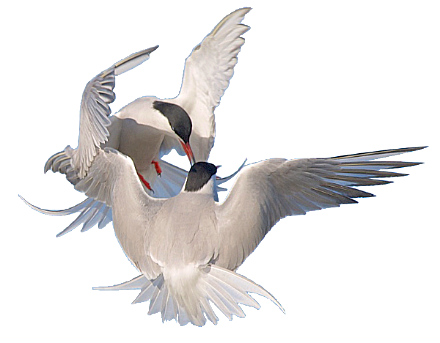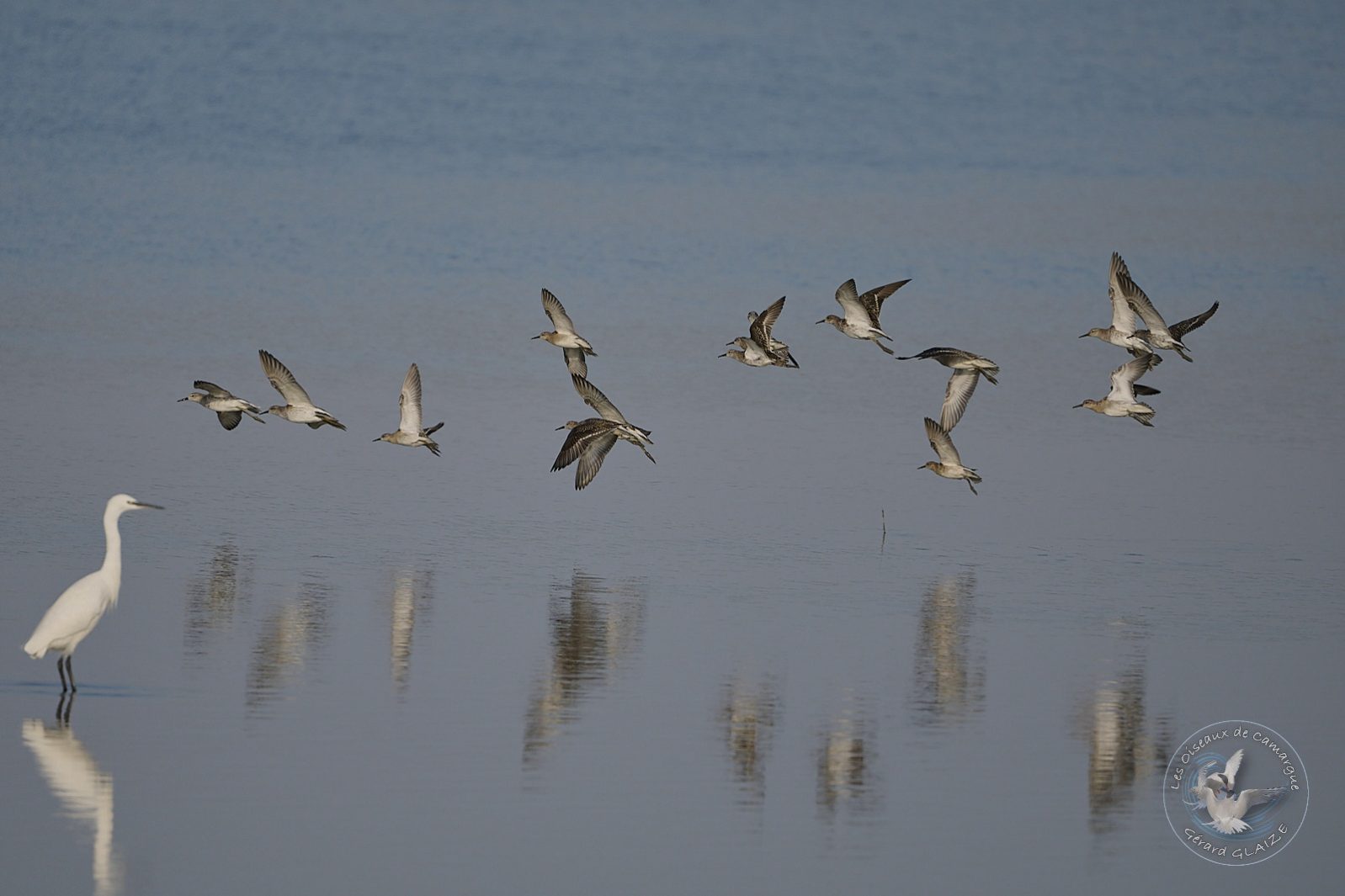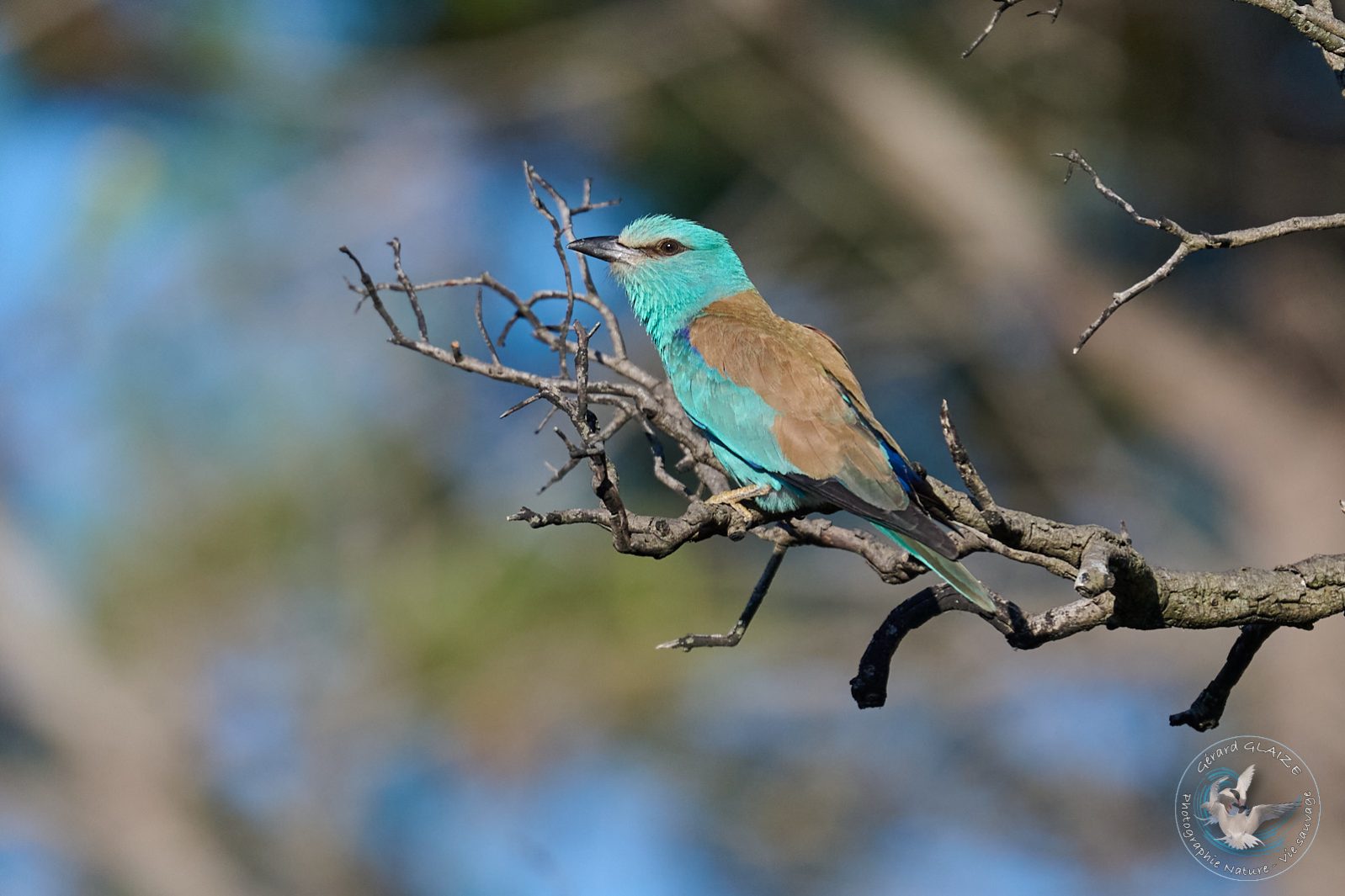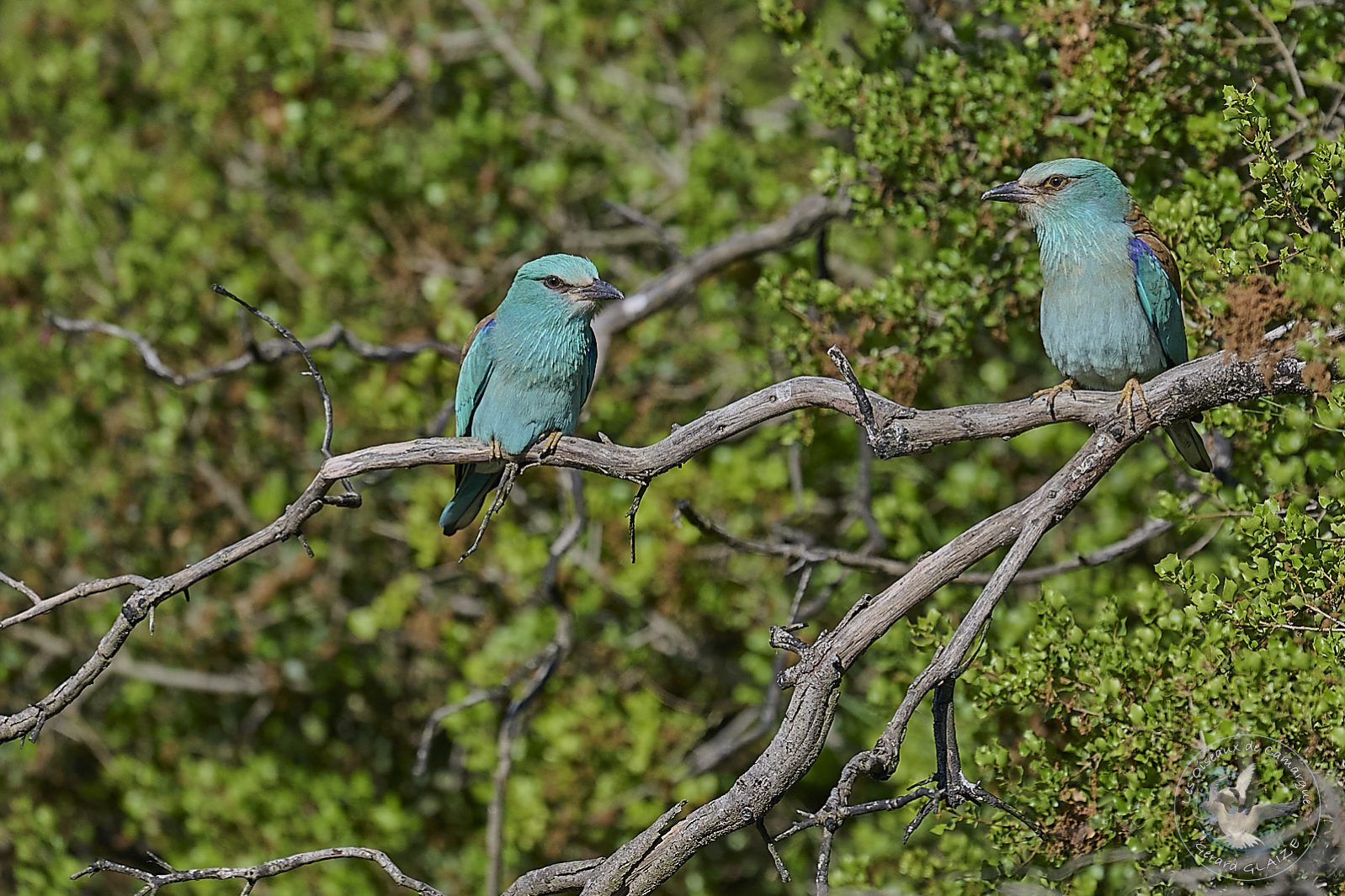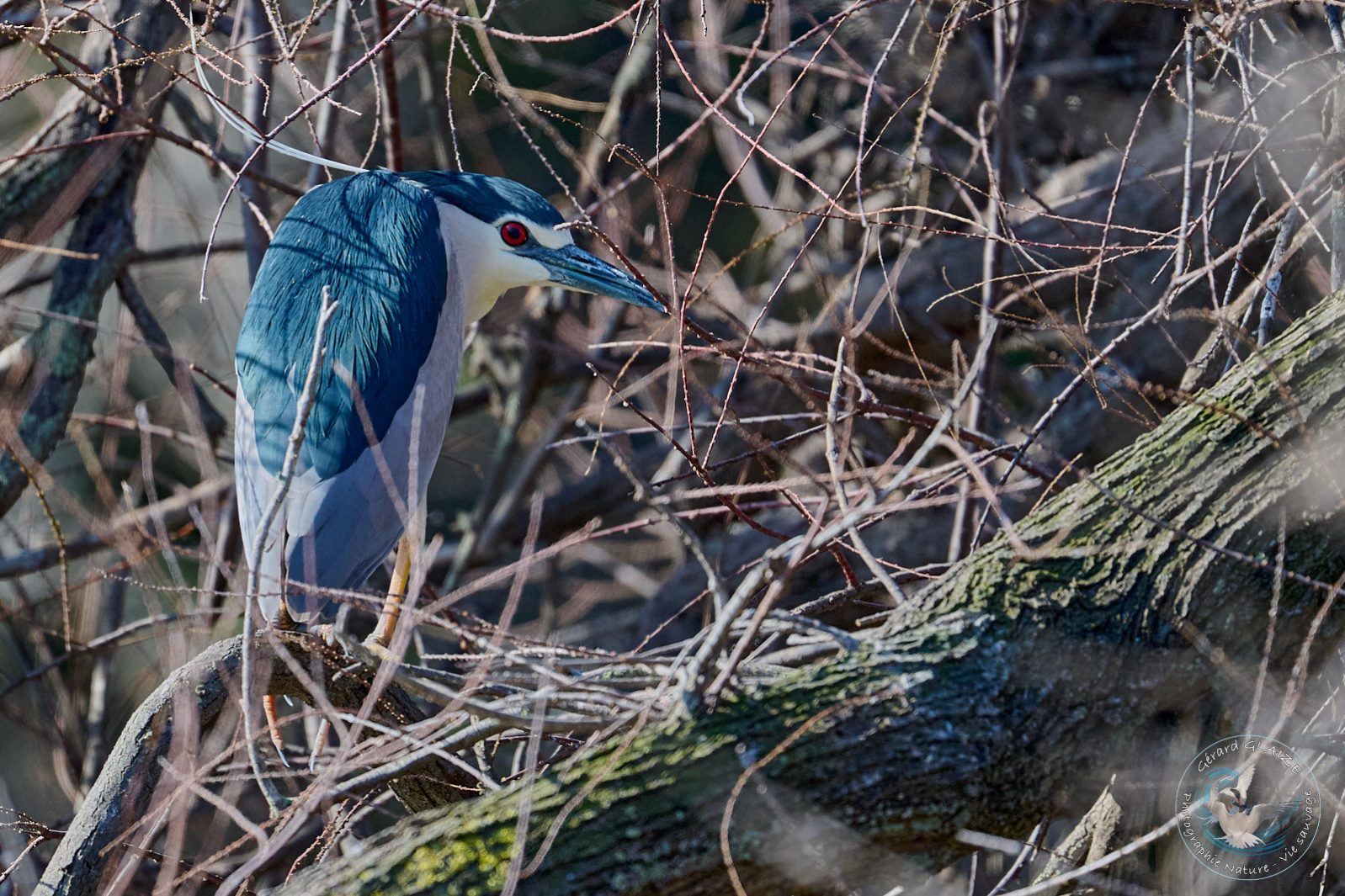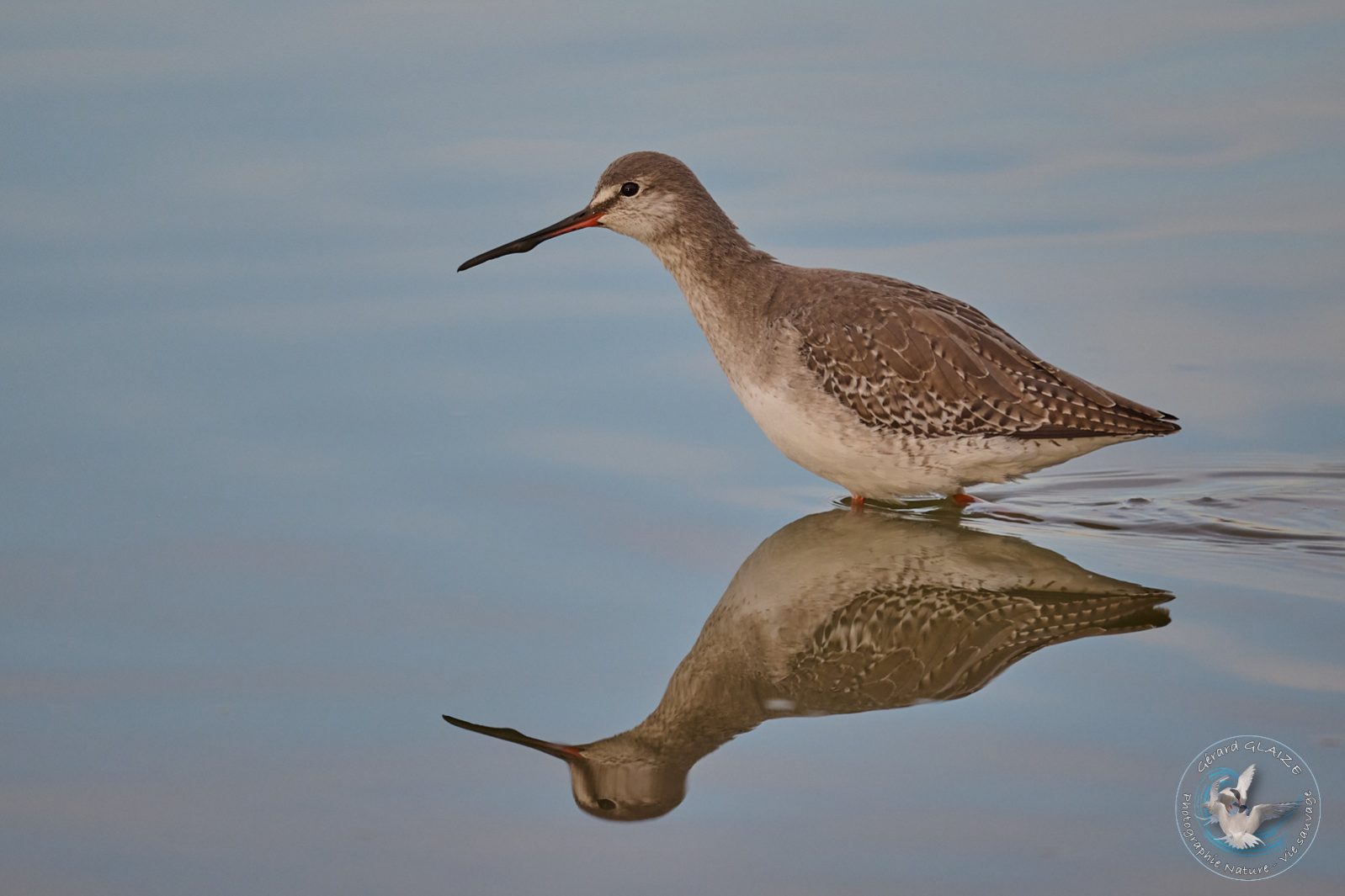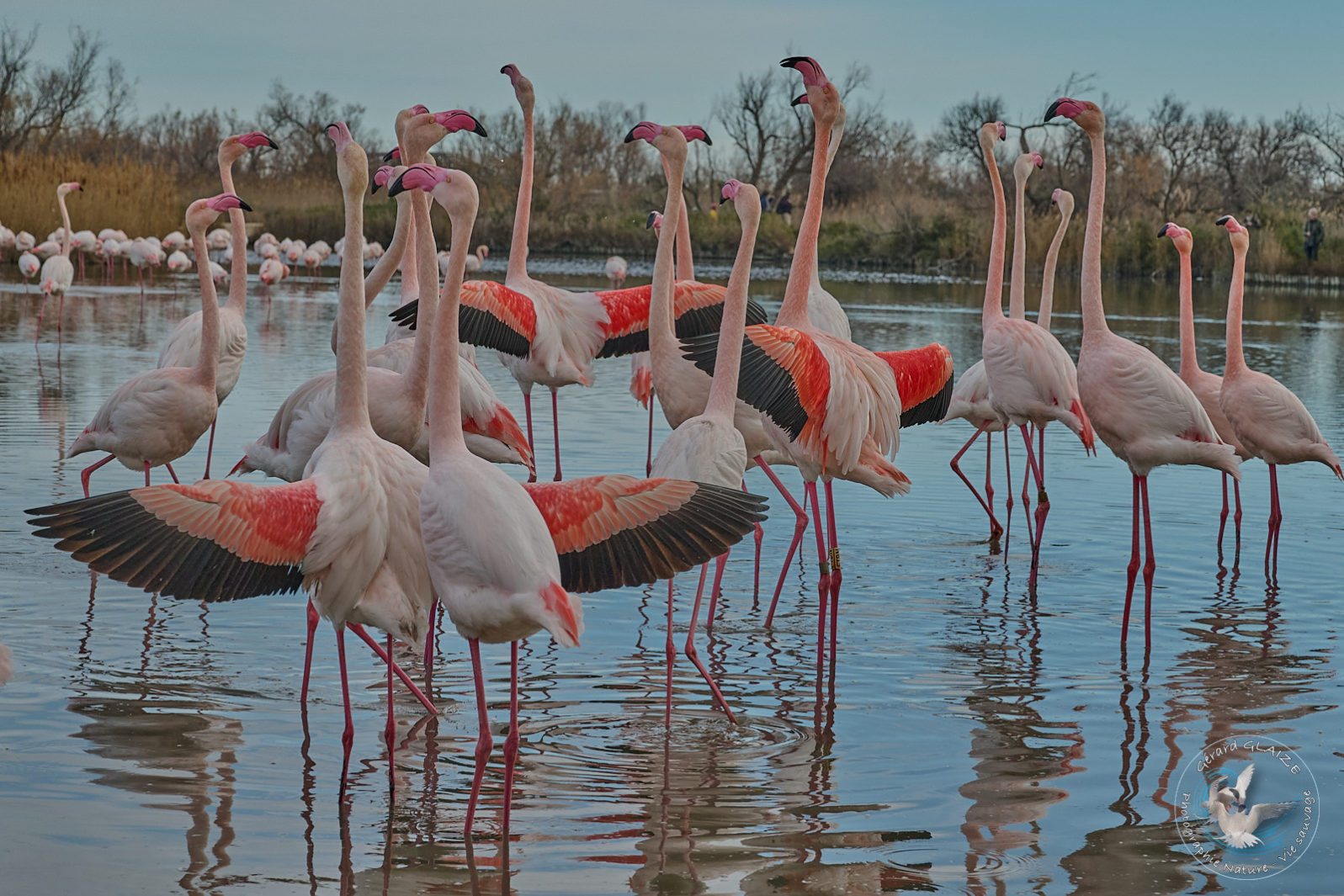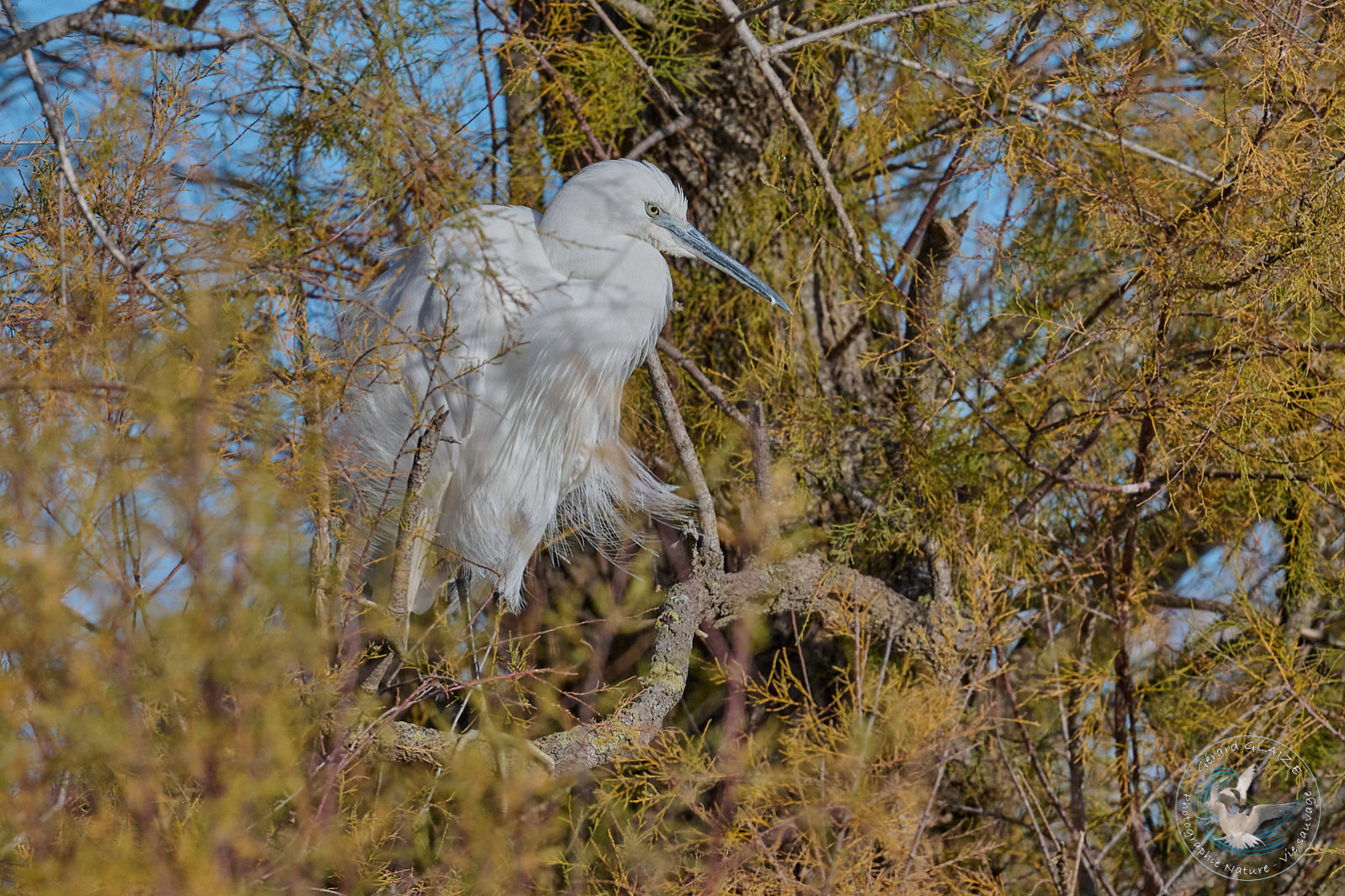Photo of the month
In this section “Photo of the month”, discover a new photograph every month. This discovery will take place according to the seasons, the weather, the migration of birds and my encounters..
November 2025
The Bearded Reedling is a passerine bird about the size of a tit, with a long, graduated tail. In its breeding plumage, the male is a very reddish-brown bird with a pale bluish-grey head, adorned with two long, conspicuous black “moustaches” extending from the lores. The throat is white, the bill pointed and slender, and the iris orange-yellow. The upperparts, tail, and flanks are very reddish-brown. The white outer scapulars and the white edges of the primary flight feathers form two white bands along the sides. The wing coverts, except for the greater outer coverts which are reddish-brown, and the tertials are black with reddish-brown edges.

October 2025
Ruff, often called the Fighting Sandpiper in the 20th century but actually more closely related to sandpipers, is a species of wading bird in the Scolopacidae family, exhibiting marked sexual dimorphism, especially during the breeding season. In spring, the male Ruff is a striking sight, sporting a large ruff and, on the sides of its head, tufts of erectile feathers similar to the ruff. The coloration of these ornamental feathers varies from white to gray, reddish-brown, and black, with streaks and bars.

September 2025
This large heron-like bird, with its elegant, drooping crest and white plumage, is easily recognizable by its long, broad bill, which is curiously wrinkled and spatula-shaped at the tip. This long, spatula-shaped bill allows it to stir up the mud and filter plankton from the water. In breeding plumage, the adult bird has an orange-tinted crest on the nape of its neck and a collar of the same color at the base of its neck. Its bill is black with a yellow tip, and its legs and toes are also black.

July 2025
The European Roller is the photo of the month for the second time this year. I was lucky enough to find a site where a pair is roaming. I’m so happy to have been able to take a series of photos of this magnificent bird. This bird is unique and unmistakable.
This bird arrives as early as April and leaves its nesting grounds between late August and early September. Its wintering grounds are in sub-Saharan Africa, stretching all the way to South Africa. It is therefore a highly migratory bird.

June 2025
European bee-eater is the Photo of the month. This bird of Meropidae Family is a skilful hunter, catching insects in flight. This has also earned him his nickname “Hunter of Africa”. These are mainly wasps, bees, hornets, as well as dragonflies in the Camargue. It is the size of a thrush. Its colors with metallic reflections are composed of the turquoise blue-green of the belly, the chest and the bottom of the wings, brown-red on the back the crown and the top of the wings, dark green of the tail, black of the slightly curved beak and like extended by a line of equally black feathers, red iris in a black eye, yellow bordered with black for the bib.

May 2025
European Roller (Coracias garrulus) is also the only species of the Coraciidae family to live in France. It is a brightly colored bird. First of all, the plumage of the European Roller is distinctive, with its turquoise-blue coloration on the underside of the body and head, contrasting with the reddish-brown coat. Primary flight feathers are black. This bird has a thick, black beak.
Juvenile is duller; in fact, the blue is paler and shaded with green on the head and wings. Both sexes are similar.
This bird is unique and unmistakable.

April 2025
Garganey is a dabbling duck, but slightly larger than its cousin, the Eurasian Teal.
Adult male is recognizable by its long white eyebrow, which tapers to the nape of the neck. It dons its breeding plumage in the spring: broad white eyebrows and blue-gray scapulars. It adopts the same plumage in summer as its female but retains light blue wing coverts.
In the Camargue, it is known as the cacharel, which is how Jean Bousquet from Nîmes adopted this name for his ready-to-wear brand, Cacharel.

March 2025
Black-crowned Night Heron is a stocky bird with a broad head, thick, short neck, and short legs. Adult has black crown and mantle. Black bill is short and thick. Wings, rump and tail are grey, and whitish underparts. Legs and feet are greenish-yellow. Black-crowned Night Heron does not take on its adult plumage until its third year. It is a bird that leads a rather nocturnal, or at least crepuscular, life. This makes its observation more difficult.

February 2025
Spotted Redshank is a species of wader belonging to the Scolopacidae family. It is a slender, long-legged wader, slightly larger than the Common Redshank. Plumage is completely different between winter and the breeding season, which has consequently earned it its name of harlequin. In winter plumage, the Spotted Redshank is entirely light gray, with a white eyebrow descending behind the eye. Legs are red. In breeding plumage, it is entirely black pigmented with white dots. Legs become black.

January 2025
In this month of January, the Flamingos are in full courtship. It is a show that we never tire of, and the opportunity to take some beautiful photographs.
It is a real choreography that these magnificent birds perform, four, five movements that they will repeat in a loop. They will raise their heads, spread their wings, show their magnificent color. This parade will last a few months, from December to February-March.
The goal of this courtship is to allow the Flamingos to find their partner for the coming season. Indeed, each year the Flamingos form a different couple, but which remains faithful during the year.

December 2024
Little Egret is Photo of the month. This is the most widespread of the egrets. It is recognized by its white plumage, its very elongated black beak, its black legs with yellow toes. This Egret, smaller than the Great Egret, has two very long, fine white ornamental feathers behind the crown, extending from the nape to halfway down the neck, and which play an important role during courtship.
If you want more details about this bird see the blog article

Informations and documentations :
Observation places :
The latest articles :
